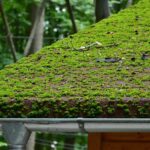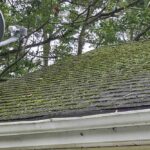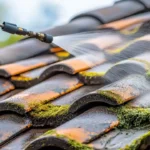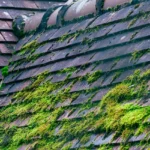If you’re a homeowner, maintaining your roof is a crucial aspect of home upkeep. Over time, you might notice some shingles lifting, which can lead to leaks and other issues if not addressed. Learning how to re-nail lifted shingles is an essential skill that can save you time and money, ensuring your roof remains in excellent condition.
In this article, we’ll delve into the details of how to re-nail lifted shingles and why it’s important for every homeowner to understand this process. By taking care of your roof, you can protect your home from the elements and maintain its value.

What Causes Shingles to Lift?
Before diving into the solution, it’s important to understand why shingles lift in the first place. Common causes include:
Weather Conditions
Strong winds, heavy rains, and snow can loosen shingles over time. If you live in an area with harsh weather, this could be a frequent issue.
Poor Installation
Incorrect installation methods might not secure shingles properly, leading to lifting. It’s essential that shingles are nailed down correctly the first time around.
Age of the Roof
As roofs age, shingles become brittle and more prone to lifting. Regular maintenance can help extend the life of your roof.
Tools Needed for Re-nailing Shingles
Before you start, gather the necessary tools to ensure a smooth repair process:
- Hammer
- Galvanized roofing nails
- Roofing cement
- Caulking gun
- Ladder
- Protective gloves
- Safety goggles
Step-by-Step Guide on How to Re-nail Lifted Shingles
Step 1: Inspect the Roof
Start by inspecting your roof for any lifted or damaged shingles. It’s important to assess the extent of the damage before proceeding.
Step 2: Secure Your Safety
Ensure your ladder is stable and you’re wearing safety gear. Safety should always be your top priority when working on the roof.
Step 3: Remove Loose Shingles
Carefully remove any loose shingles. Be gentle to avoid causing further damage.
Step 4: Apply Roofing Cement
Using a caulking gun, apply roofing cement under the shingle. This helps to secure it in place and creates a waterproof seal.
Step 5: Re-nail the Shingle
Use galvanized roofing nails to reattach the shingle. Ensure the nails are driven in straight and are flush with the surface of the shingle.
Step 6: Seal the Nails
After nailing, apply roofing cement over the nails to prevent water from seeping in.
When to Call a Professional
While many homeowners can handle minor repairs, there are times when it’s best to call a professional. Consider seeking help if:
- The damage is extensive.
- You have a steep roof.
- You’re not comfortable working at heights.
Preventing Future Shingle Lifting
To avoid future issues, regular roof maintenance is key. Inspect your roof annually and after major storms. Consider reading roof inspection tips to know what to look for.
Regular Cleaning
Keep your roof clean by removing debris. This reduces the chances of shingle lifting. Discover post-snow maintenance tips for your roof.
Use Quality Materials
Invest in high-quality shingles and materials. They last longer and are less likely to lift.
Professional Inspections
Get your roof professionally inspected every few years. Experts can spot problems you might miss.

FAQs on Re-nailing Lifted Shingles
Why do shingles lift?
Shingles can lift due to weather conditions, poor installation, or age. Regular maintenance helps prevent lifting.
Can I fix lifted shingles myself?
Yes, many homeowners can re-nail lifted shingles with the right tools and safety precautions.
How often should I inspect my roof?
Inspect your roof annually and after major storms. This helps catch any issues early.
For more detailed tips on roof maintenance, consider visiting this comprehensive guide on roofing maintenance.
This article contains affiliate links. We may earn a commission at no extra cost to you.








